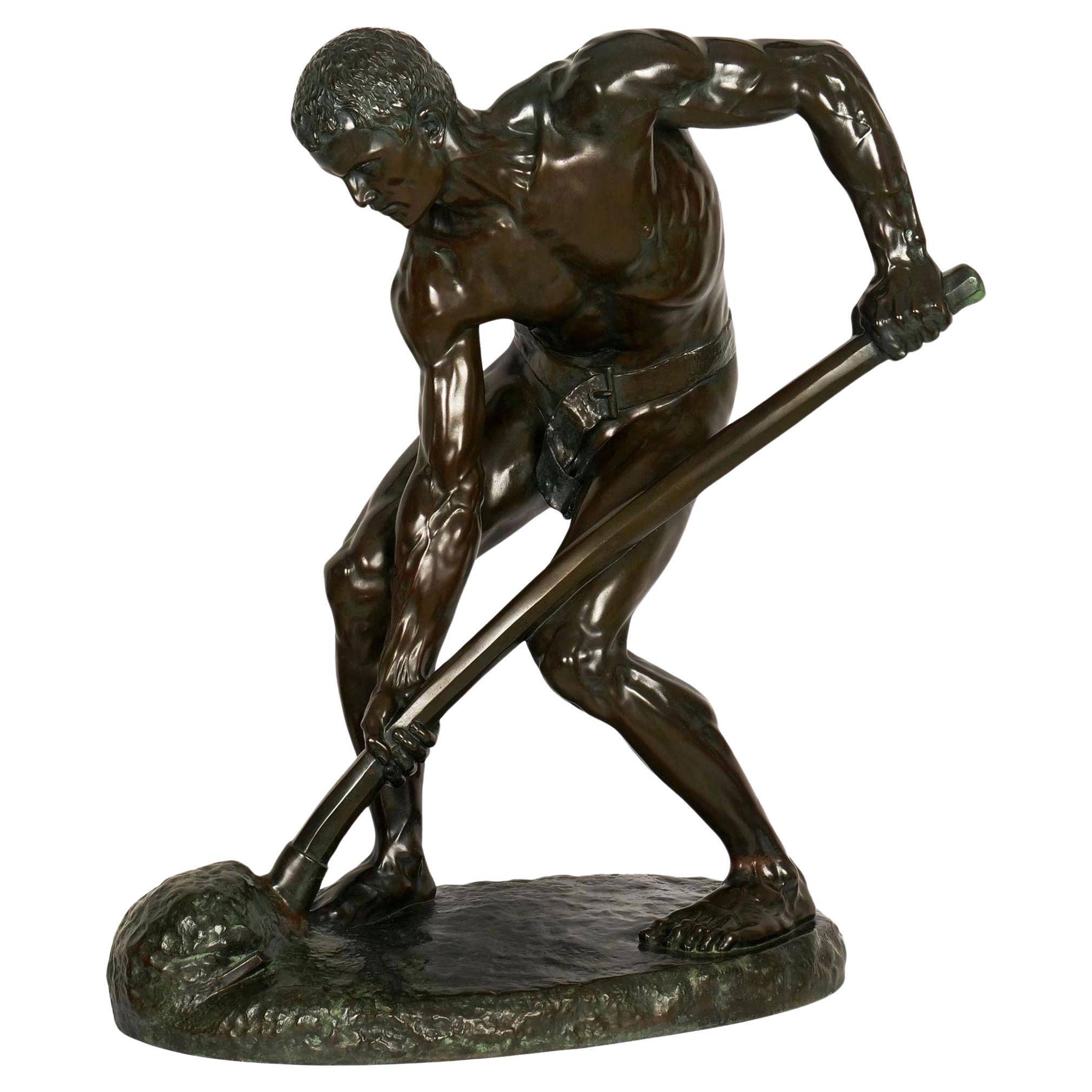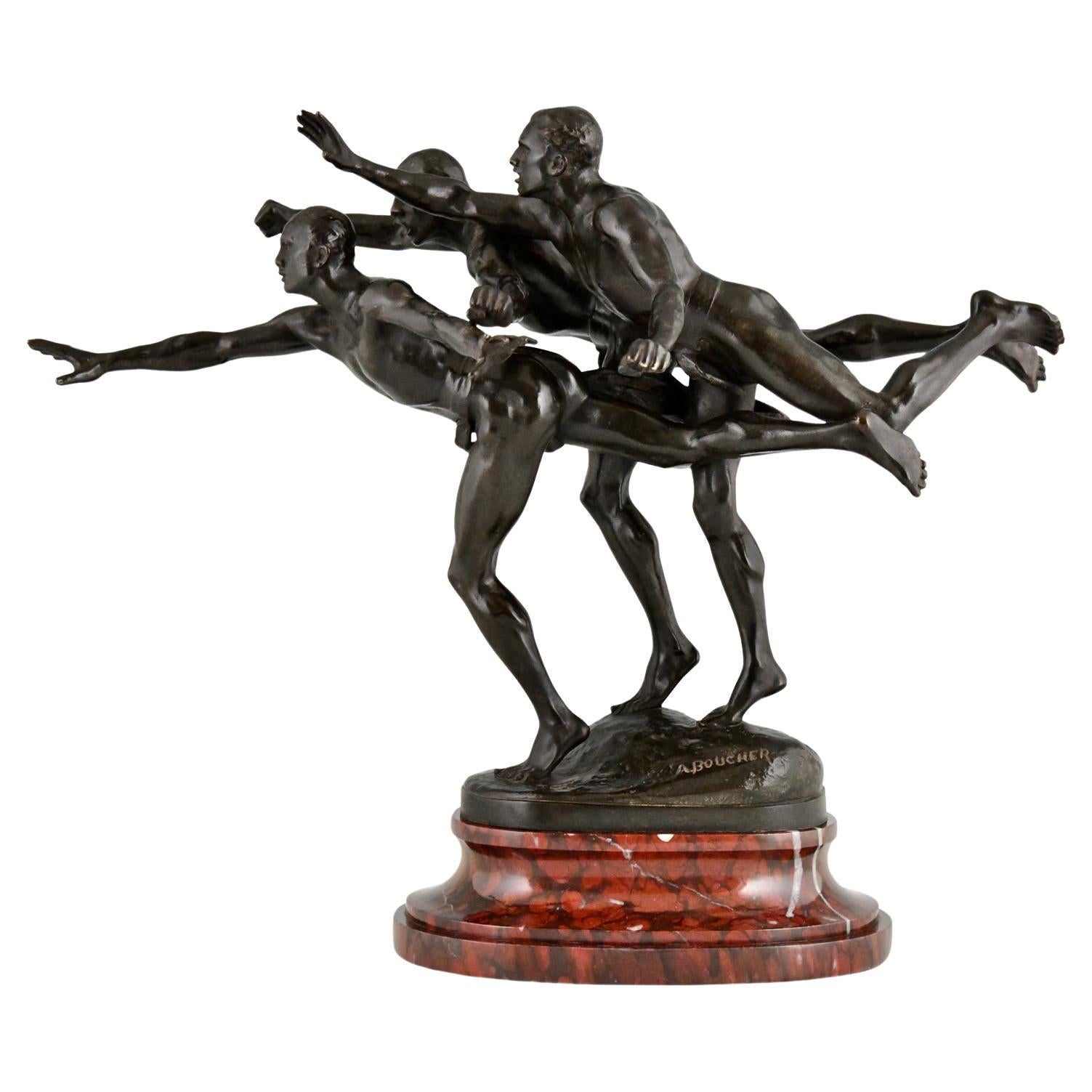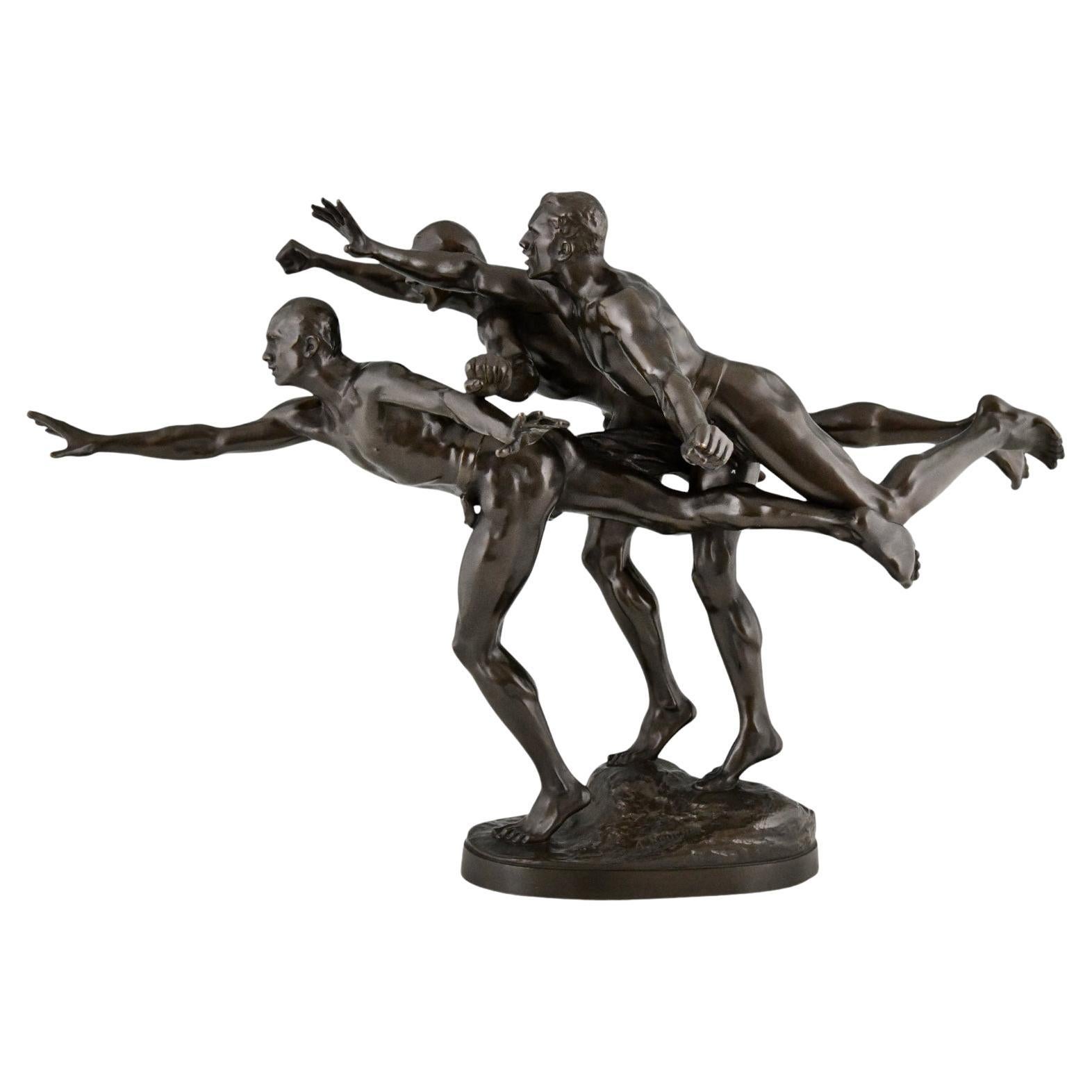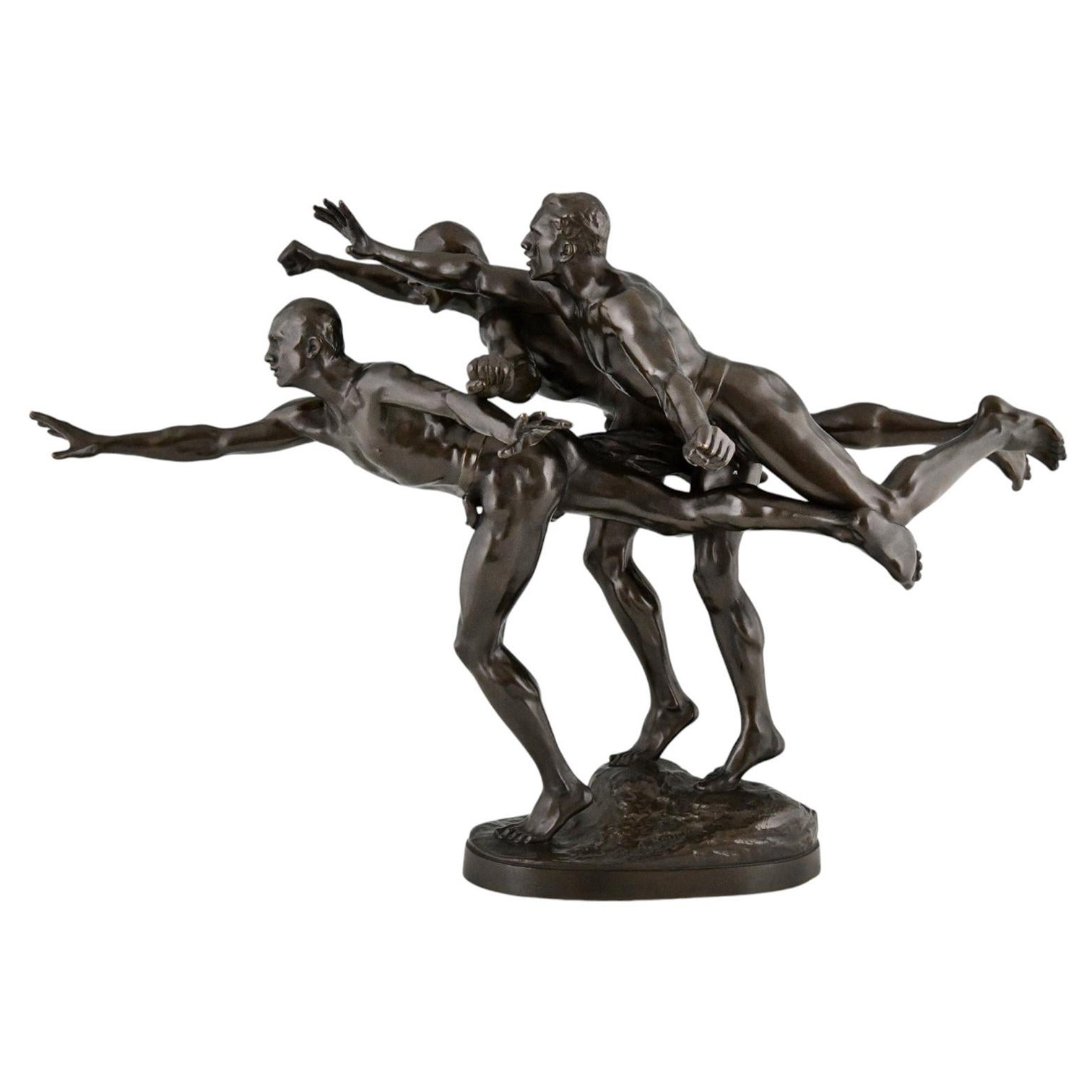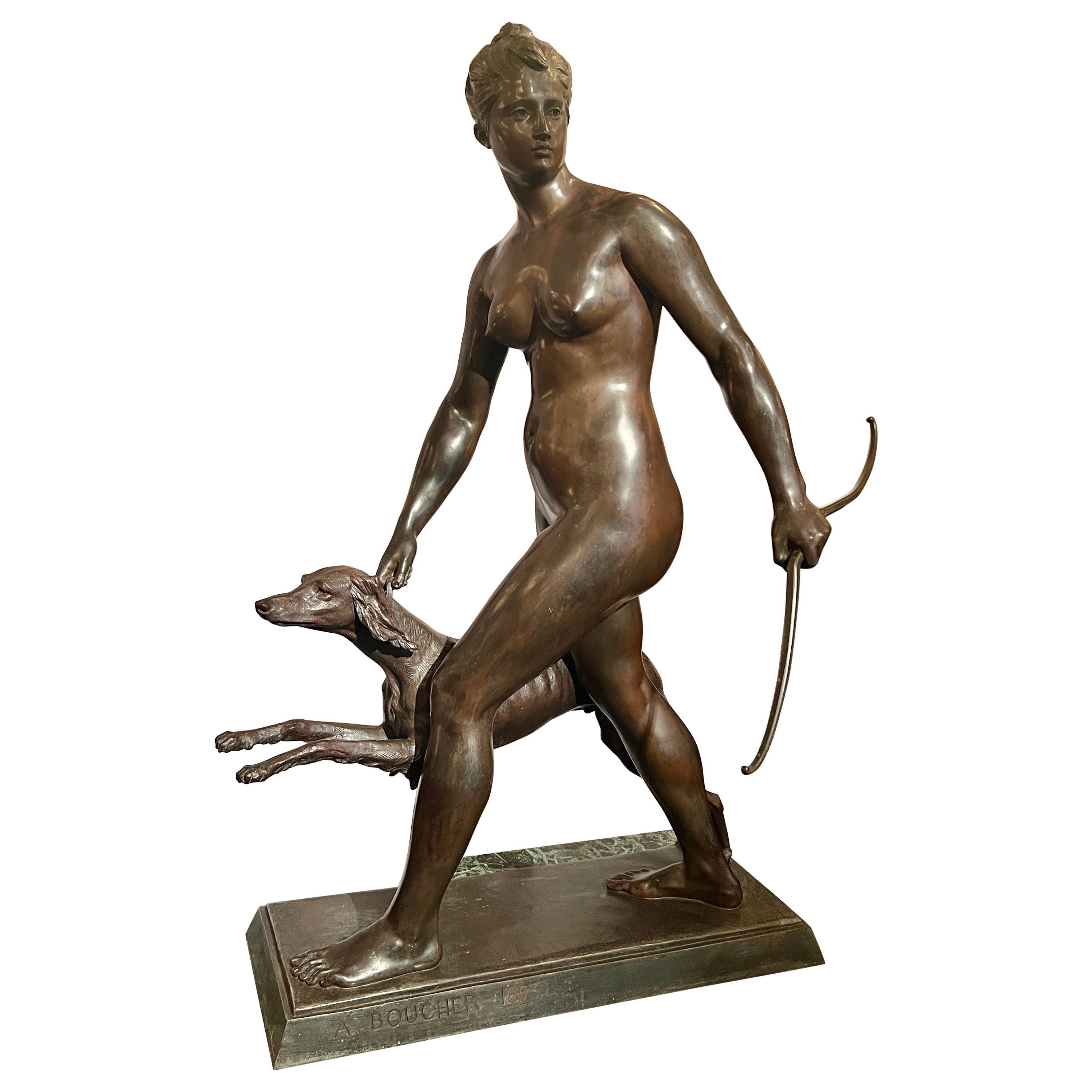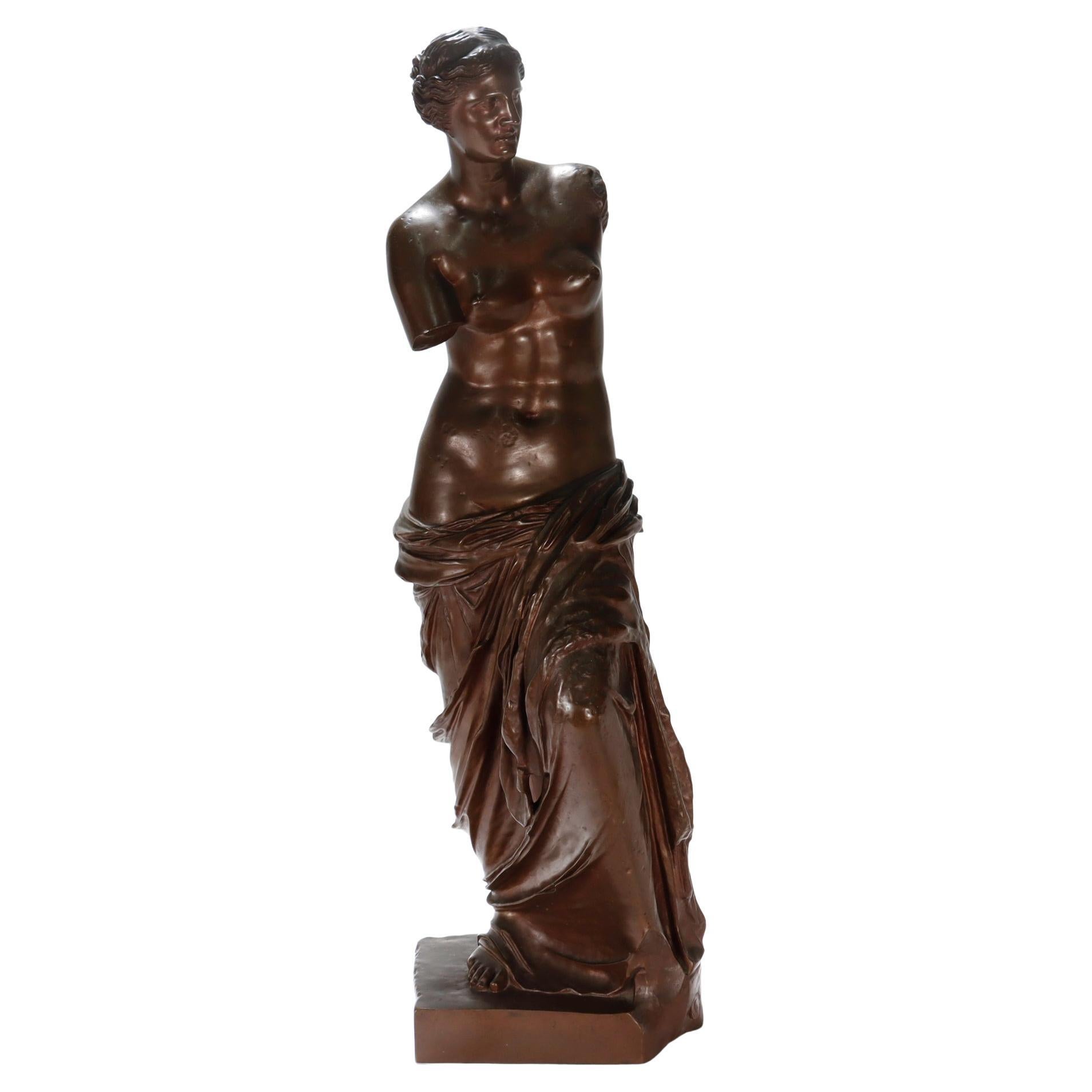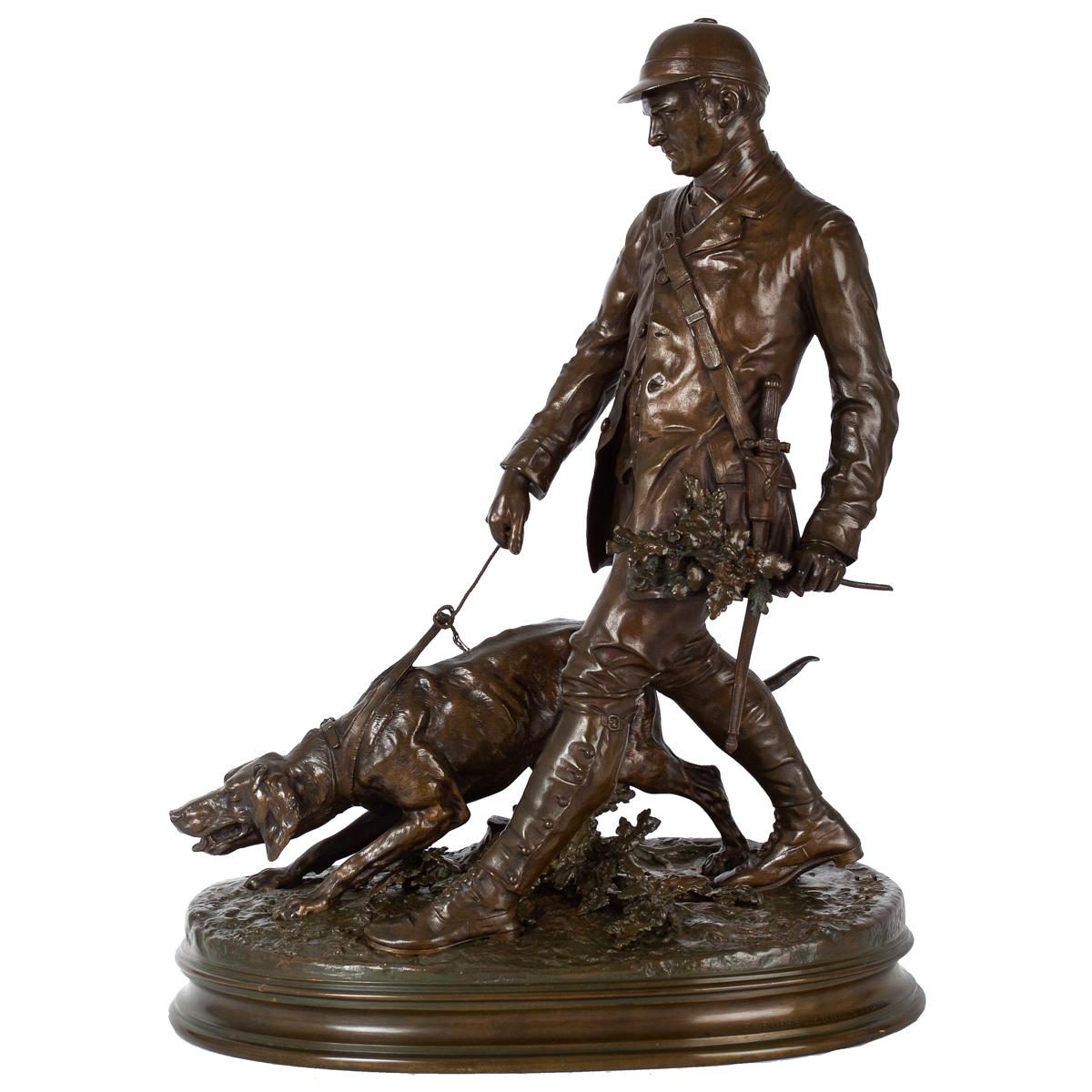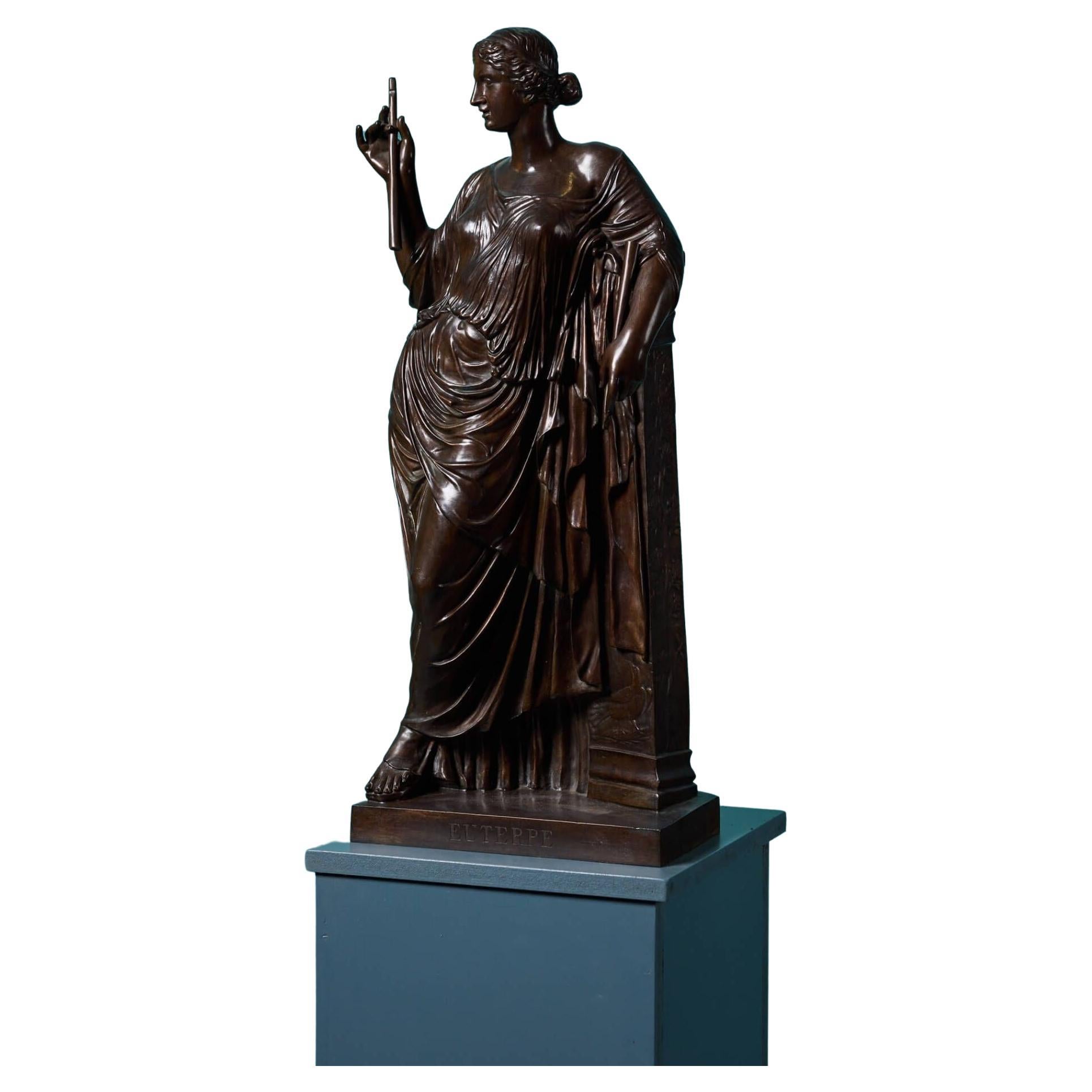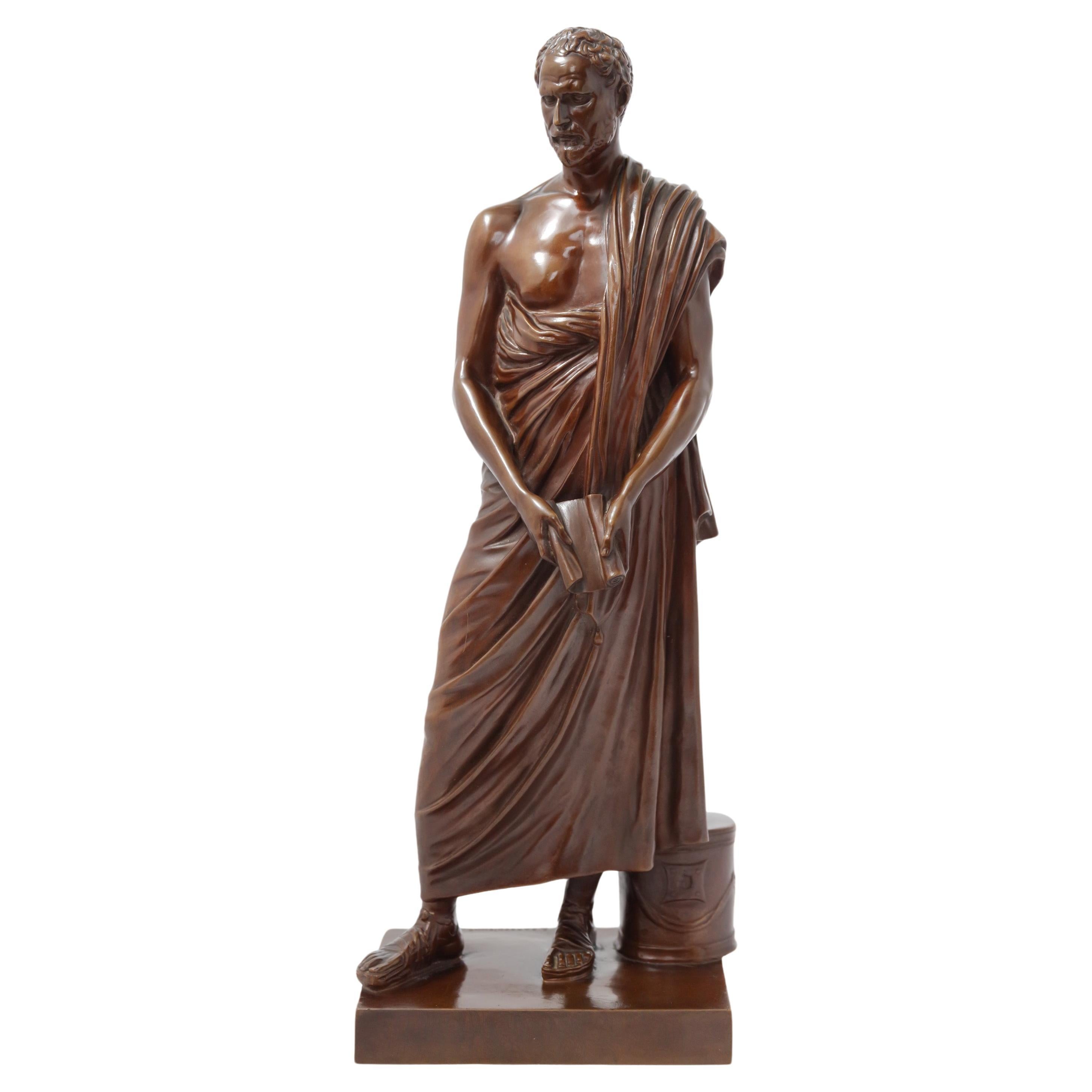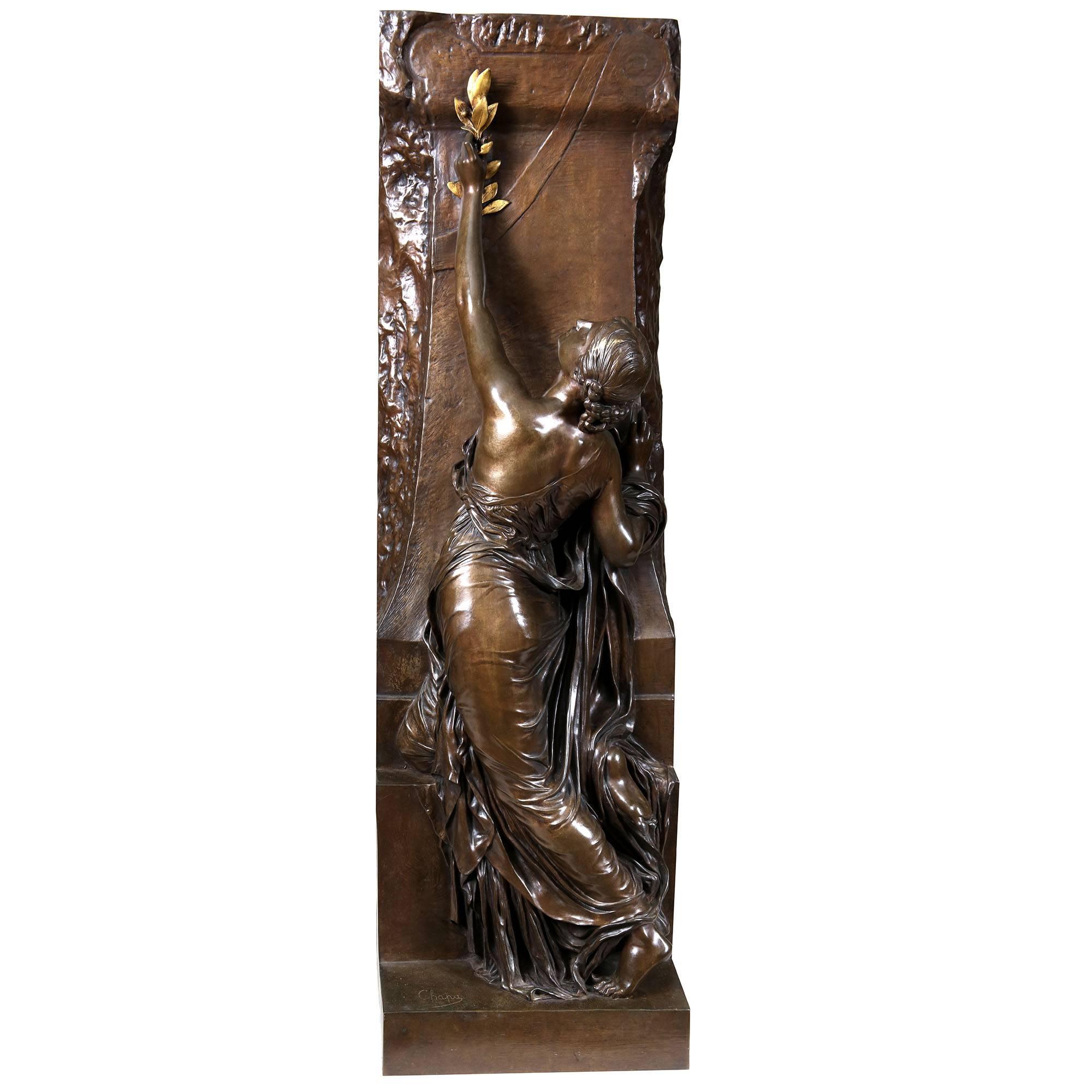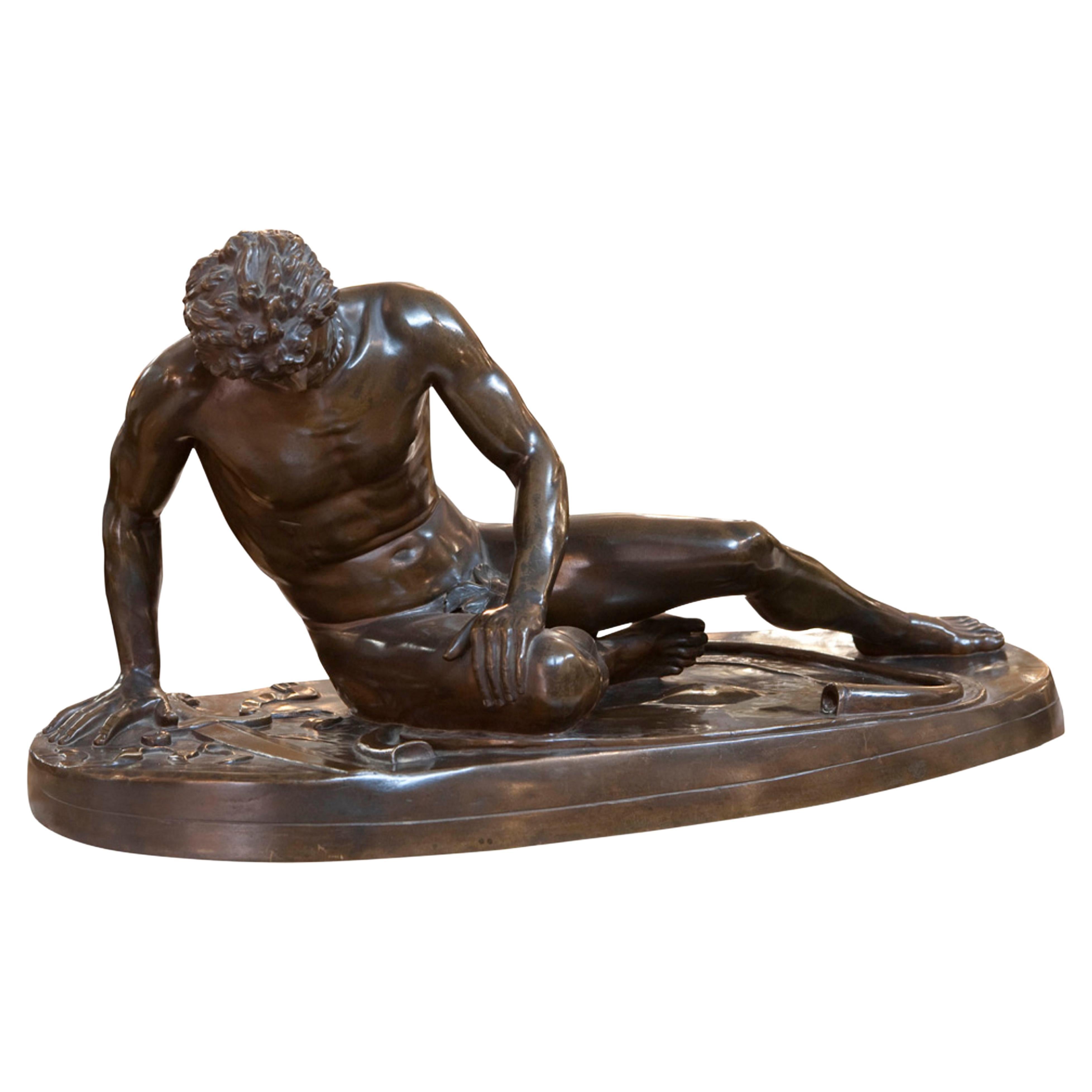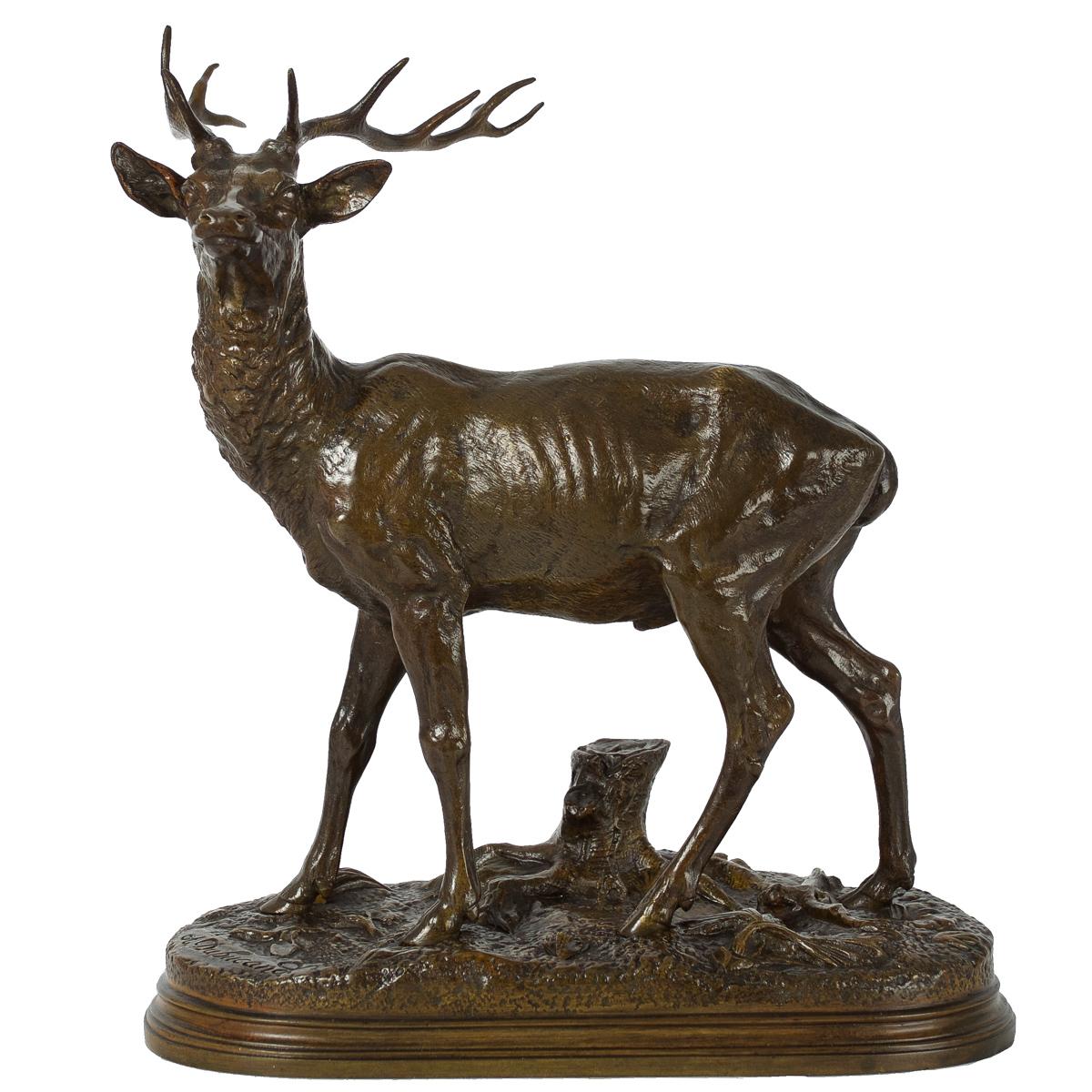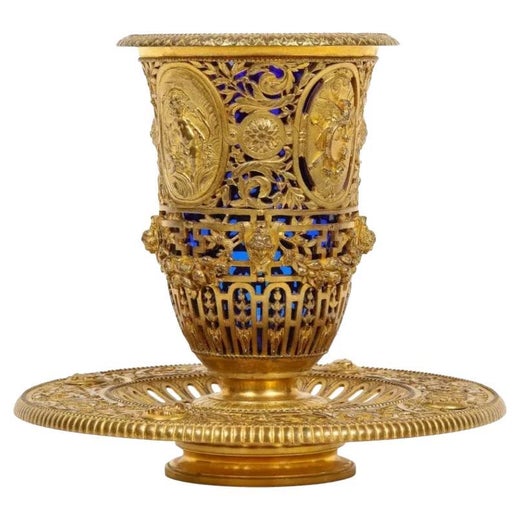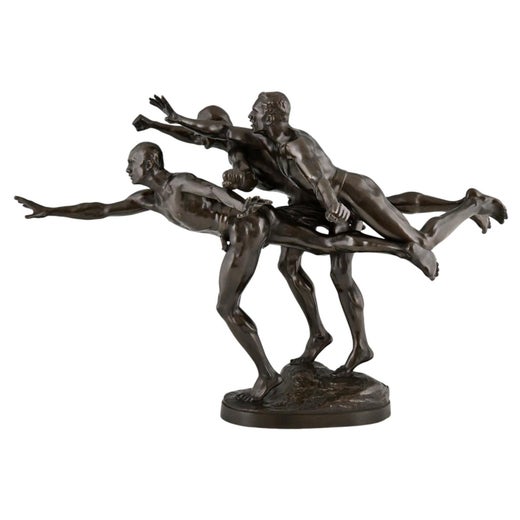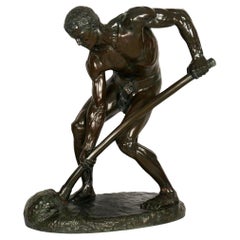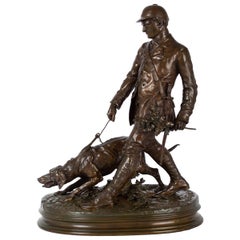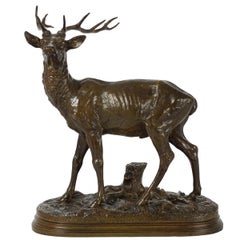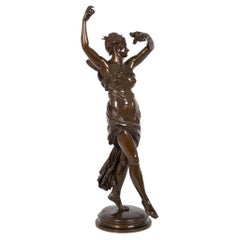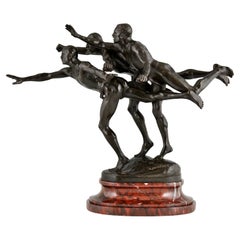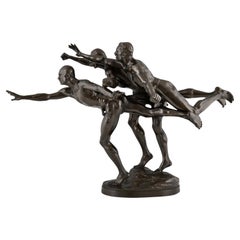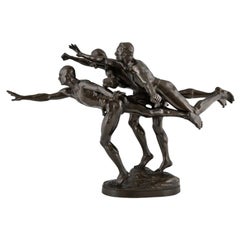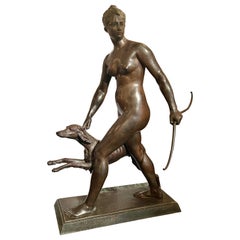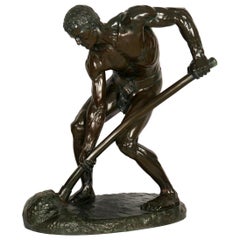
“A la terre!” French Antique Bronze Sculpture by Alfred Boucher & Barbedienne
View Similar Items
“A la terre!” French Antique Bronze Sculpture by Alfred Boucher & Barbedienne
About the Item
- Creator:Alfred Boucher (Sculptor),F. Barbedienne Foundry (Maker)
- Dimensions:Height: 26.38 in (67.01 cm)Width: 21 in (53.34 cm)Depth: 13 in (33.02 cm)
- Materials and Techniques:
- Place of Origin:
- Period:
- Date of Manufacture:circa 1890
- Condition:Wear consistent with age and use. Minor losses. See condition notes in description text.
- Seller Location:Shippensburg, PA
- Reference Number:Seller: 008AMH08W | Silla, ltd.1stDibs: LU1059023776282
F. Barbedienne Foundry
Founded by one-time Parisian wallpaper dealer Ferdinand Barbedienne and engineer Achille Collas, one of the most revered foundries in 19th-century France began with the invention of a revolutionary 1830s-era device that could produce proportional reproductions — large or small — of sculptures. Collas’s machine, which yielded miniature likenesses of antiquities for the interiors of homes the world over, was pivotal to the success of the F. Barbedienne Foundry. The successful firm earned prestigious awards and critical acclaim and created exquisite bronze candleholders, clocks and lamps for a range of wealthy and prominent clients.
The duo first launched their company under the name Société Collas et Barbedienne, and early on, they optimized chemical processes for pigmenting and patinating their bronze statuettes. After Collas died in 1859, Barbedienne forged on alone, and the company’s name changed to simply F. Barbedienne.
Barbedienne employed more than 300 workers at that point, and the Maison created a range of furnishings and decorative objects that featured the integration of marble and ormolu accents. However, with the onset of the Franco-Prussian War of 1870, the foundry was forced to retrofit its molds, and the production of cannons replaced sculptures, furniture and vases.
When Ferdinand Barbedienne passed away in 1891, his nephew and heir, Gustave Leblanc, took over as president, changing the name to Leblanc-Barbedienne. Leblanc expanded production into Germany, the United Kingdom and the United States, carrying on the company's legacy with monumental sculptures, and models and securing production rights for famous statues. Paul-Alexandre Dumas, an Art Nouveau maker and student of Louis Majorelle, succeeded Leblanc until the company's closing in 1952.
Barbedienne pieces had been exhibited regularly in the 19th century and were especially prevalent at Europe’s international expositions and world’s fairs, where they received numerous awards. Today, the Musée d’Orsay in Paris holds dozens of Barbedienne works in its collection, including intricate mirrors, vases and cups created by Louis-Constant Sévin at the foundry. For more than two decades, Sévin created lamps, boxes and more at Maison Barbedienne. Working alongside award-winning chaser Désiré Attarge, Sévin designed Napoleon III-era works that greatly appealed to European nobility.
Other notable artists who collaborated with Barbedienne included Eugene Aizelin, Emmanuel Fremiet, Antonin Mercié, Emile Guillemin, Edouard Lievre, Ferdinand Levillain and Auguste Rodin.
On 1stDibs, find a collection of Barbedienne decorative objects, lighting and collectibles.
Alfred Boucher
The son of a farm worker, Alfred Boucher was born in 1850 in the French commune of Bouy-sur-Orvin and rose to prominence as a prolific, award-winning artist during the late 19th century, producing meticulously detailed sculptures for the likes of royalty and presidents.
When he was young, the Boucher family moved to Nogent-sur-Seine where his father secured gardening work for sculptor Joseph-Marius Ramus. Ramus, who worked in the neoclassical style, saw potential in Boucher. He invited him to work in his studio and helped him get a scholarship to Beaux-Arts de Paris when Boucher was 19 years old.
In Paris, Boucher studied under esteemed sculptors Augustin Dumont and Paul Dubois. He began to develop a unique style characterized by a sense of life, movement and symbolism. While Boucher is known as an academic sculptor, his work usually paid tribute to day laborers — an understandable endeavor given his father’s role as a farmhand.
As his profile grew, Boucher also secured commissions to create busts of prominent figures in the scientific community as well as politicians. The artist became friendly with Auguste Rodin — widely considered the father of modern sculpture — and mentored Laure Coutan and Camille Claudel. Later, in 1902, Boucher founded the low-cost studios La Ruche in Montparnasse to support young artists.
Boucher participated at his first salon in 1874, winning a bronze medal. He later lived in Italy and further honed his skills, and was awarded the Prix du Salon in 1881. He received the Grand Prix at the Exposition Universelle in Paris in 1900.
Boucher was promoted to Grand Officer in the Légion d'Honneur in 1925 and passed away in 1934.
Find original Alfred Boucher sculptures and other art on 1stDibs.
More From This Seller
View AllAntique 19th Century French Figurative Sculptures
Bronze
Antique 19th Century French Romantic Animal Sculptures
Bronze
Antique 19th Century French Romantic Animal Sculptures
Bronze
20th Century French Art Nouveau Figurative Sculptures
Bronze
Antique 19th Century French Romantic Animal Sculptures
Bronze
Antique 19th Century French Romantic Busts
Marble, Brass, Bronze
You May Also Like
Antique 1890s French Romantic Figurative Sculptures
Marble, Bronze
Antique 1890s French Romantic Figurative Sculptures
Bronze
Antique 1890s French Other Figurative Sculptures
Bronze
Antique Late 19th Century French Figurative Sculptures
Bronze
Antique 19th Century French Belle Époque Figurative Sculptures
Bronze
Antique Mid-19th Century French Neoclassical Figurative Sculptures
Bronze
